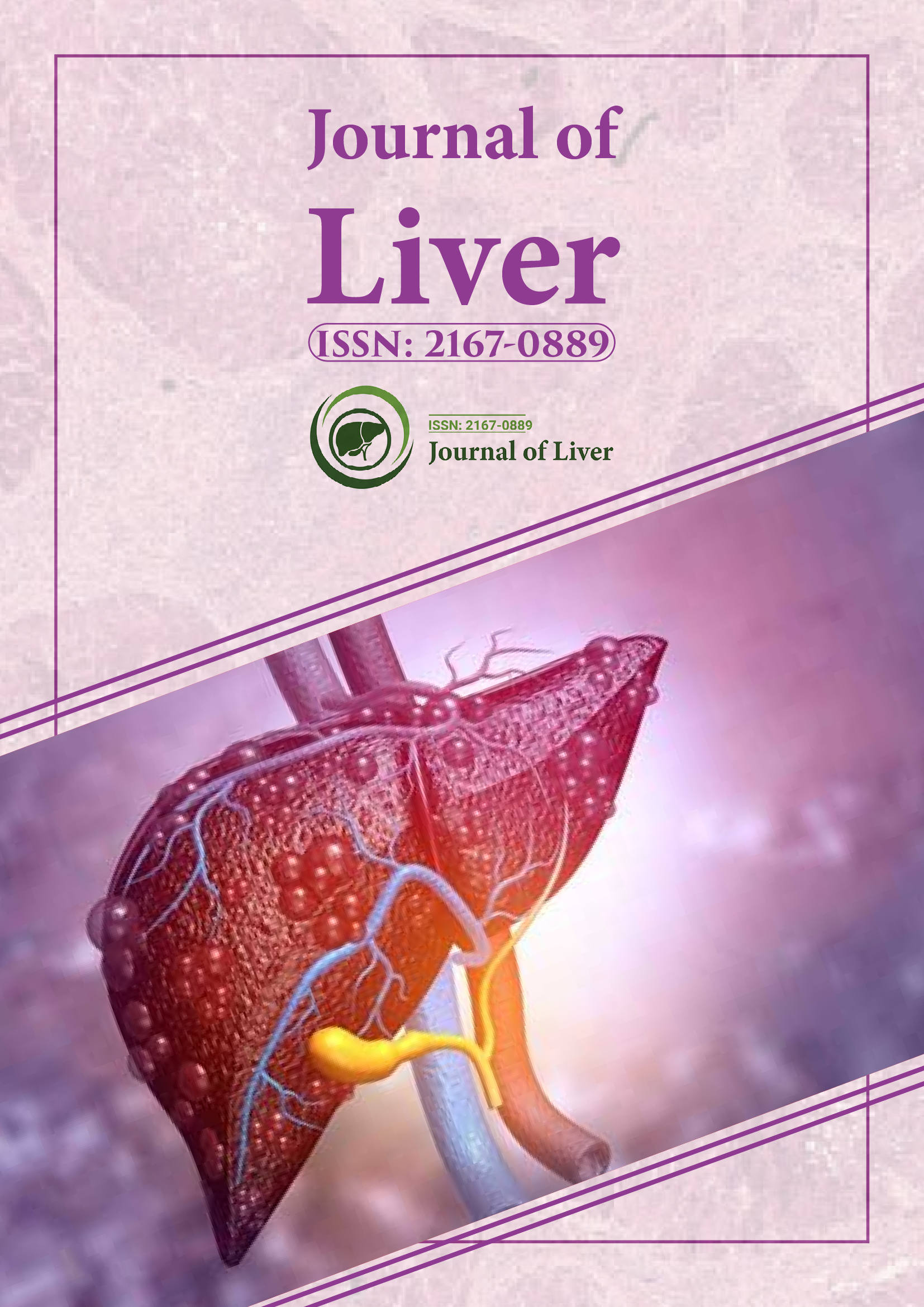Indexed In
- Open J Gate
- Genamics JournalSeek
- Academic Keys
- RefSeek
- Hamdard University
- EBSCO A-Z
- OCLC- WorldCat
- Publons
- Geneva Foundation for Medical Education and Research
- Google Scholar
Useful Links
Share This Page
Journal Flyer

Open Access Journals
- Agri and Aquaculture
- Biochemistry
- Bioinformatics & Systems Biology
- Business & Management
- Chemistry
- Clinical Sciences
- Engineering
- Food & Nutrition
- General Science
- Genetics & Molecular Biology
- Immunology & Microbiology
- Medical Sciences
- Neuroscience & Psychology
- Nursing & Health Care
- Pharmaceutical Sciences
Opinion Article - (2022) Volume 11, Issue 3
Anatomical Description and Functions of Liver in Human Body
Olivia Emma*Received: 04-May-2022, Manuscript No. JLR-22-16929; Editor assigned: 06-May-2022, Pre QC No. JLR-22-16929(PQ); Reviewed: 20-May-2022, QC No. JLR-22-16929; Revised: 24-May-2022, Manuscript No. JLR-22-16929(R); Published: 06-Jun-2022, DOI: 10.35248/2329-6925.22.11.137
Description
The liver is the biggest or largest gland and organ in the human body. The liver also makes proteins essential for blood clotting. Formation of bile is a unique function of the liver for a very important function which is for the survival of the organism. Kupffer cells works in huge amounts as immune cells in the liver. The liver plays a vital and important role in controlling metabolism of carbohydrate Liver regeneration is necessary process that in return helps liver by retrieval from injury. Diseases related to liver include Fascioliasis.
The liver has around 2.5% of the adult body weight. More than 500 important functions are performed by liver. Hepatocytes are the most abundant cells in the liver, which are involved in carrying out the different functions of the liver. The left lobes and right lobes are the two main sections of liver. The liver is placed in the position of top right side portion of the stomach cavity, underneath the diaphragm, and on top of the stomach, right side of the intestines and kidney. The liver is connected with two large blood vessels which include the portal vein the hepatic artery. The main job of this vital organ liver is blood filtration appearing from the digestive tract. The liver makes the drugs into good use and removes toxic chemicals. The liver discharges bile that goes up back in the intestines. The liver also produces proteins important for clotting of blood and other functions. Bile Acids (BAs) are synthetized from cholesterol in the liver. Liver plays vital role in the production of Albumin. It moves steroid hormones and helps fatty acids in maintaining the right pressure and safeguards the blood vessels from leakage. Liver regeneration is a critical and significant process that the liver calculates on for retrieval from injury. The structural arrangement seen by the liver has great significance for its immune function.
Anatomy of Liver
The liver is situated beneath the diaphragm, and on top of the stomach, right kidney, and intestines, in the right upper side of the stomach cavity. The liver is a red kind of coloured organ that weighs about 3 pounds. It is shaped like a cone. The liver has 2 main lobes. Both of these lobes are made up of total 8 sections that all together consist of total 1,000 lobules.
Functions of The Liver
Bile production
Formation of bile is a unique role of the liver which is important for the betterment of the organism. Bile is secretion in an aqueous form that starts from the cells of liver and is altered distally by transport systems i.e. secretory and absorptive in the epithelium bile duct. Bile then gets in the gallbladder from where it is saturated or is send straightaway to the lumen of intestines. Bile contains about 95 percent of water. Bile contains a number of endogenous solid containing salts of bile, steroids, enzymes bilirubin phospholipid, heavy metals, amino acids, porphyrins and cholesterol.
Production of albumin
Albumin is one of the most found plasma protein, depicting about 50% of the total protein in our body. It is a protein which consists of 585 amino acids and encoded by a gene molecular weight of 66 kDa on 4 chromosomes and is solely produced by liver cells, which releases it directly into the stream of blood. The capability of albumin to increase the plasma volume shows the pathophysiological history for the use of human albumin in many clinical states.
Metabolizing carbohydrates
The liver plays a different and critical role by maintaining concentrations of glucose to its normal level in controlling metabolism of carbohydrates. This is accomplished by a highly tight system of kinases and enzymes regulating either glucose breakdown or synthesis in hepatocytes. This process of breakdown or synthesis in which insulin plays a key role is controlled by gluco regulatory mediators.
Citation: Emma O (2022) Anatomical Description and Functions of Liver in Human Body. J Liver. 11:137.
Copyright: © 2022 Emma O. This is an open-access article distributed under the terms of the Creative Commons Attribution License, which permits unrestricted use, distribution, and reproduction in any medium, provided the original author and source are credited.
